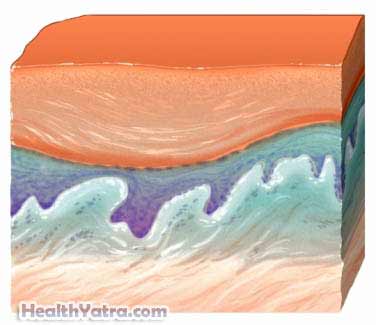Definition
Tinea nigra is an infection of the skin. It affects the outermost layer of skin. The infection will cause a black or brown patch on the skin. Except for the dark patch, tine nigra is a harmless condition.
Tinea nigra usually affect the palms of the hands or soles of the feet. It may also appear on the neck or trunk.

Causes
Tinea nigra is caused by a fungus. The type of fungus that causes this infection is most often found in rotting wood, soil, compost, or sewage. The fungus may enter your body through a break in your skin.
Risk Factors
You are more likely to develop tinea nigra if you have been living or traveling in tropical or subtropical areas, such as:
- South Africa
- Brazil
- Panama
- Cuba
- Puerto Rico
- Coastal areas along the Southeastern seaboard of the United States
Symptoms
Tinea nigra causes a brownish-black patch on the skin that:
- Has an irregular shape with a darker border
- May be itchy or scaly
- Tends to expand over time
A tinea nigra patch may be mistaken for a type of skin cancer. Talk to your doctor about any skin growth or changes.
Diagnosis
Your doctor will ask about your symptoms and medical history. A physical exam will be done. You may need to see a skin specialist for tests, diagnosis, and treatment.
Tinea nigra is diagnosed by scraping a small sample of the affected skin. The sample is grown in a lab. The fungi can then be identified.
Treatment
Talk with your doctor about the best treatment plan for you.
Tinea nigra is usually treated with an antifungal medication. The medication is placed on the skin as creams or ointments.
Prevention
To help reduce your chance of getting tinea nigra, take the following steps:
- Use care when traveling in high risk areas.
- Avoid contact with potentially infected material, such as rotting wood, dirt, sewage, or compost.
- If you must work with materials above take the proper safety steps. Wear gloves and other protective gear.
